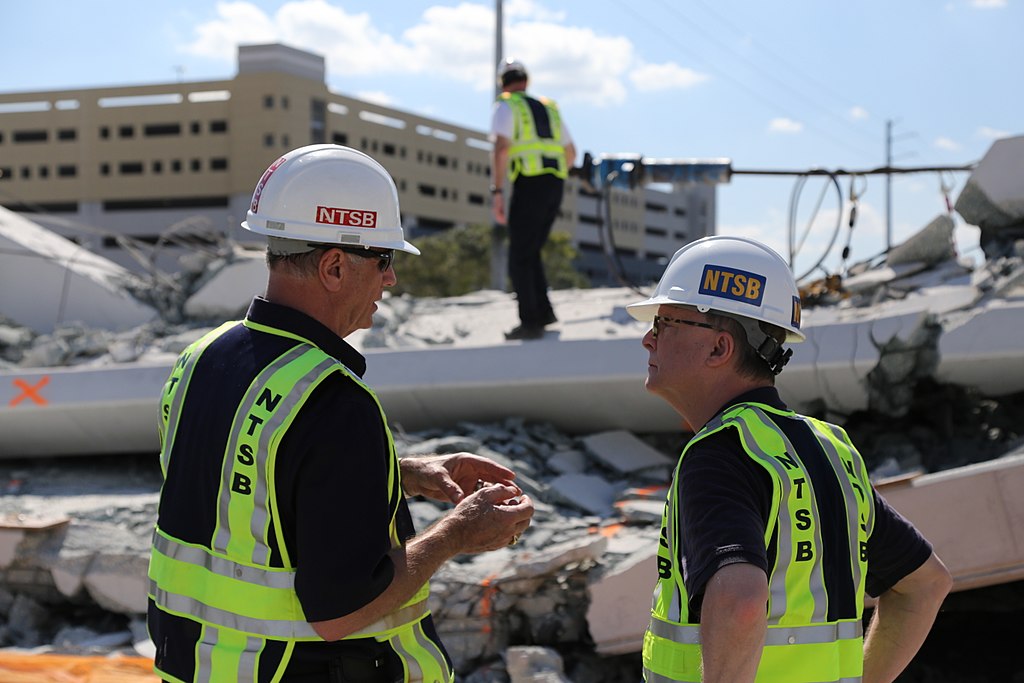In March of 2018, an under construction pedestrian bridge on Florida International University’s (FIU) campus collapsed onto an open street below, killing 6 and injuring several others. Many investigations and lawsuits are still ongoing after the tragedy, but OSHA has released their official report after a roughly 14 month long investigation.
OSHA’s 115-page report, titled “Investigation of March 15, 2018 Pedestrian Bridge Collapse at Florida International University, Miami, FL,” places blame on most of the key players in the bridge construction, including engineers and contractors, but the Engineer of Record received most of the blame. The large and visible cracks in the concrete was the focus of most of the findings.
The final report made clear that FIGG should have immediately instructed that the street below the bridge be closed when it was inspected just hours before the bridge collapse. OSHA also concluded that there were “structural design deficiencies that contributed to the collapse during construction stage III. The cracks on the bridge occurred due to deficient structural design.”
On the same morning of the collapse, a meeting was held to follow up after engineers evaluated the cracking, but, despite the Construction Engineer and Inspector (CEI) of the project advising that the cracks were lengthening daily, FIGG “stated more than once that the cracks did not present any safety concerns.”
In addition to the items above, OSHA also pointed the finger at FIGG for not recognizing that re-tensioning the bars of diagonal 11 were not included in the original design and should have undergone a peer review, Filing to provide construction documents to an independent peer reviewer at 30%, 60%, and 90% of completion of the construction documents (as required by the Florida Department of Transportation), not ensuring that the peer reviewer did not check the structural design of the truss design at stage III (another FDOT requirement), and failing to recognize that the failed truss was not a redundant structure and if one diagonal member failed then the entire bridge could collapse.
While FIGG faced the brunt of OSHA’s report, both Munilla Construction Management LLC (the Design-Build Contractor) and Networking Engineering Services, Inc. dba Bolton Perez and Associates, Inc. (BPA) were also blamed for not exercising their “own independent professional judgement,” despite communicating the status of the cracks to engineers.
In September of 2018, OSHA announced fines against 5 different companies, including, but not limited to, FIGG Bridge Engineers and Munilla Construction Management LLC (MCM). In March of 2019, MCM announced that they had filed for bankruptcy, partially due to the ongoing civil lawsuits filed by survivors and the families of victims of the collapse.
The National Transportation Safety Board (NTSB) investigation is still ongoing, but they have issued 3 updates of their findings so far. This
Full report: Investigation of March 15, 2018 Pedestrian Bridge Collapse at Florida International University, Miami, FL | OSHA










2 years ago, an under construction pedestrian bridge on Florida International University’s (FIU) campus collapsed onto the open road below, killing 6 people and injuring several more. After a 19 month investigation, the National Transportation Safety Board concluded their investigation late last year, largely placing the blame on the engineer of record’s design. Now, officials are ready to start the process of replacing the bridge.